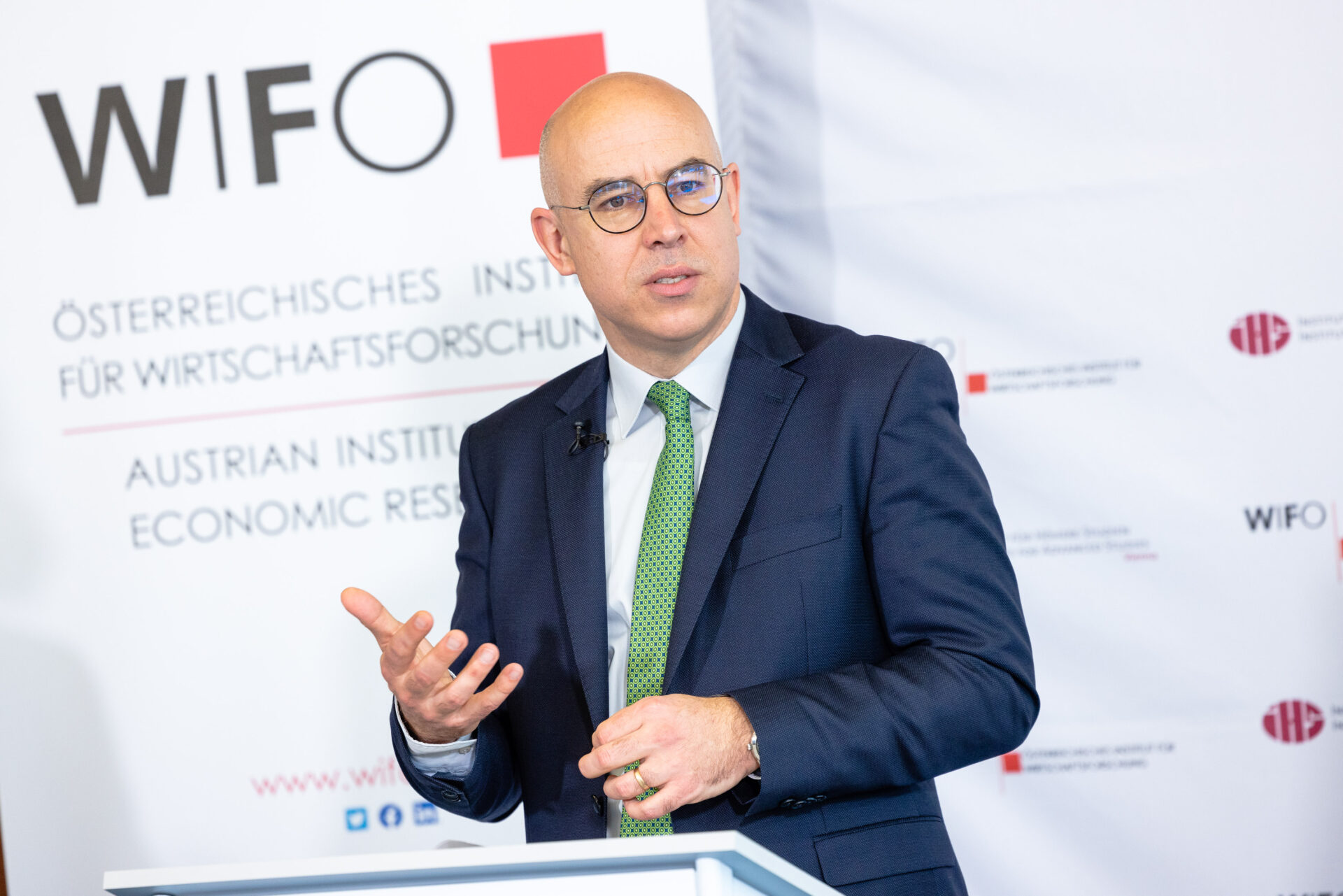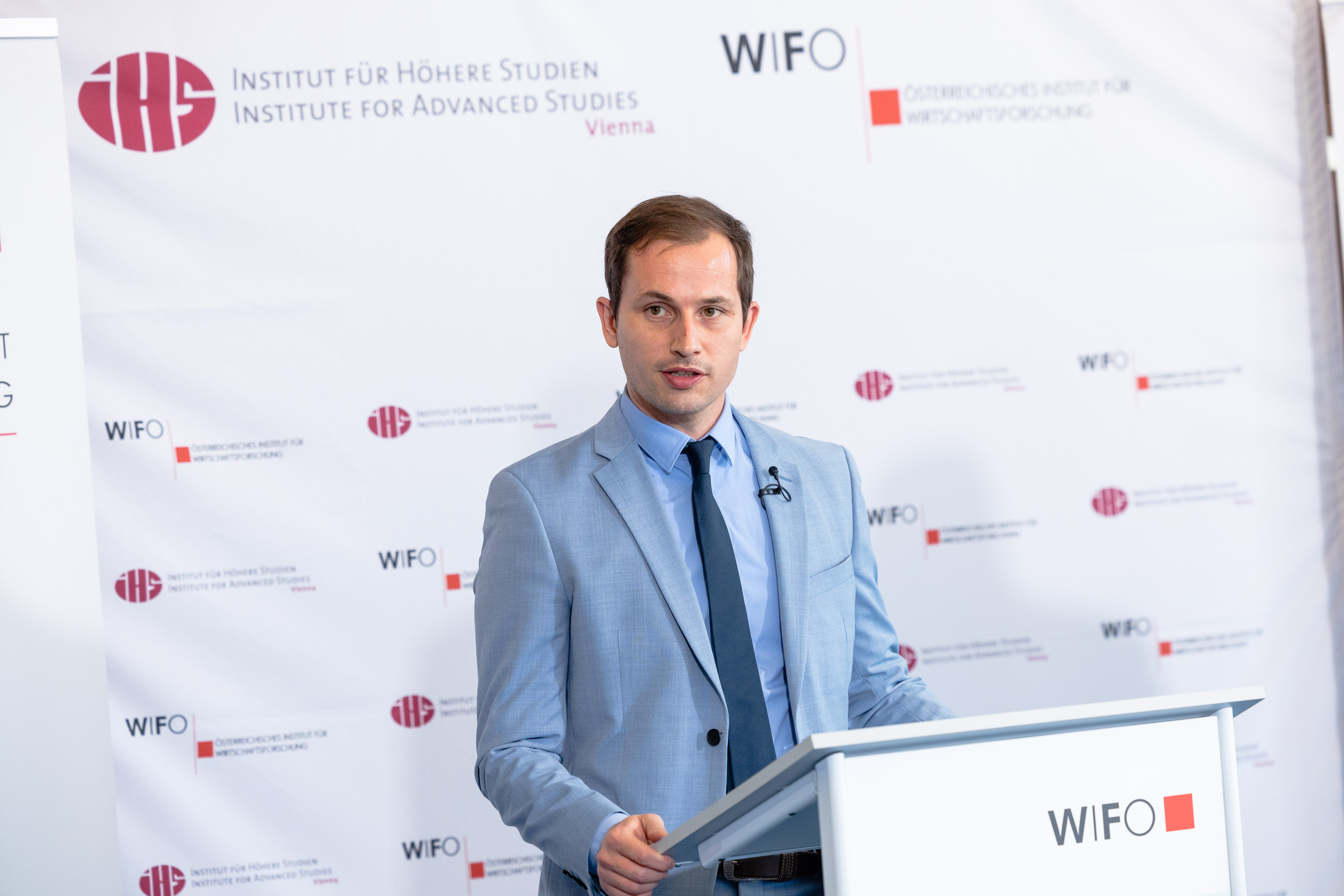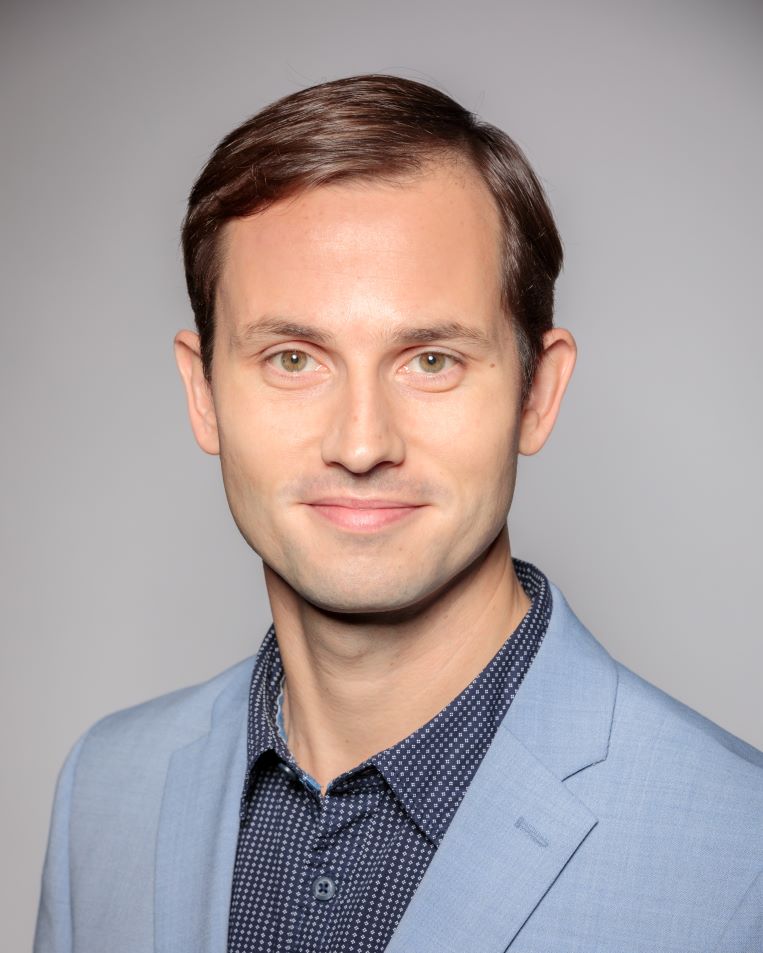
Adverse Supply Shocks Hit Buoyant Economy
The Ukraine war leads to renewed significant negative supply shocks that do not allow domestic industry to grow. Inflation remains high for longer and dampens the growth of private consumption. The large catch-up potential in tourism makes it a pillar of growth this year. Overall, more than half of the expected 3.9 percent growth rate for 2022 is due to accommodation and food services. The labour market trend remains favourable.
"Industrial value added will stagnate in 2022 despite full order books. Tourism with its high catch-up potential will become a pillar of growth", says Stefan Schiman, one of the authors of the current WIFO forecast.
 © Johannes Brunnbauer
© Johannes Brunnbauer
The Austrian economy recovered very quickly and fully from the fourth lockdown. The GDP decline was smaller than in previous lockdowns, but sharp compared to other countries – at its peak in early December 2021 it was over 5 percent. As these losses in value added were already fully compensated for by the end of 2021 and the recovery continued into March 2022, the domestic economy is expected to have grown strongly in the first quarter of 2022. Tourism services, in particular, are making high contributions to growth and will continue to support GDP for the rest of the year. The recovery in the accommodation and service sector starts from an extremely low level, so that the pre-crisis level will not be reached even in 2023 despite the strong momentum. The war in Ukraine also contributes to this. In particular, travellers from America and Asia will avoid European destinations.
The price shocks and supply bottlenecks triggered by the Ukraine war and the subsequent sanctions against Russia are causing considerable distortions in industry. Despite many orders, value added in the production of goods will merely stagnate in 2022 because energy and intermediate products are very expensive and cannot be delivered in some cases. Thus, economic growth of 3.9 percent in 2022 is entirely accounted for by the services sector. Private consumption will expand significantly weaker than assumed in the last WIFO forecast of December 2021 due to the strong increase in consumer prices (by almost 6 percent on average in 2022). However, under the assumption that less severe means than strict lockdowns will now be used to contain the COVID-19 pandemic, private consumption will reach a higher level in 2022 than in the previous year.
The domestic labour market is currently in a boom phase. Unemployment is lower, employment higher than before the outbreak of the COVID-19 pandemic. Not least because of recruitment difficulties, industrial companies likely try to keep staff on the payroll through short-time work. Thus, unemployment and employment will react by less to the Ukraine conflict than production, with the unemployment rate falling to 6¾ percent in 2022. Moreover, the high demand for labour in combination with very high inflation will lead to a strong increase in per capita wages by almost 5 percent in 2023.
Fiscal policy will remain expansionary in the forecast period. Crisis-related support measures will expire, though, as the pandemic subsides, leading to a significant relief of the national budget. However, the gradual reduction of income tax rates and other relief measures strengthen the income growth of private households in both forecast years. The European Central Bank tightens its monetary policy stance somewhat. Moreover, in Austria, macroprudential policies for lending are tightened.

